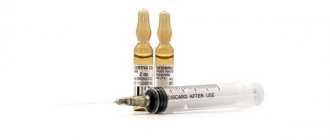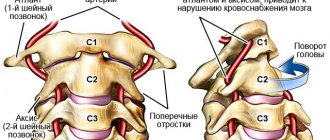General cooling of the body - freezing - is a violation of the thermal balance in the body itself, leading to a decrease in body temperature. Usually, when there is a threat of a decrease in body temperature, the body regulatoryly strives to produce heat, which is facilitated, for example, by muscle tremors. For this reason, being in the cold for a long time, a person at a certain moment, feeling the cold creeping through him, begins to shake, chatter his teeth, and shudder. As a rule, a person does not test the limits of adaptive reactions and tends to wrap himself in clothes at the first signs of cooling, rather to get into the warmth; if he is wet, take off wet clothes, etc. If such behavior is impossible for some reason (the person does not realize the danger situations, for example, in a state of alcoholic or drug intoxication, he is prevented from doing this by any metabolic, hormonal or neurological disorders, an accident on the water, for example, a fall through the ice, an avalanche, or a person simply homeless), then further cooling is fraught with the development hypothermia - a decrease in the temperature of the “core” of the body to 35 ℃ and below. Being in 5–10 degree water (on New Year’s Eve and not only, alas, people often find themselves in bodies of water in inappropriate weather) can lead to hypothermia within 10 minutes. And being in wet clothes at 0 ℃ and strong winds in less than an hour can result in irreversible hypothermia.
Pathogenetically, the process of freezing and the onset of hypothermia can be divided into 3 stages.
Rewarming and complications
With sharp peripheral vasodilation, arrhythmia and cardiac arrest may develop in several ways: 1. “Acidic” blood from the peripheral vascular bed due to active metabolic processes reaches the “core” of the body, which leads to the development of acidosis. As a result of acidosis, the content of catecholamines in the blood increases, which potentiates increased cardiac activity, increased heart rate, and increased blood pressure. Increased acidosis reduces the sensitivity of receptors to adrenergic substances, and arrhythmia may occur. 2. Due to myocardial damage, hypovolemia, after peripheral vasodilation, blood pressure decreases, which leads to the development of shock. 3. Cold blood from the peripheral parts of the bloodstream reaches the “core,” which leads to increased hypothermia, i.e., a further decrease in the temperature of the “core.”
Causes of hypothermia
Hypothermia, a process of heat exchange disorder, occurs when the body loses more heat than it produces. The rate of metabolism and adaptive response is regulated by hormones produced in the adrenal glands and thyroid gland.
There are two mechanisms of body heat production: mandatory and additional. Mandatory occurs against the background of physiological processes of the body. The heat generated is enough to maintain normal temperature, provided that the body is in comfortable temperature conditions from +18°C to +22°C. An additional one is activated when the ambient temperature goes beyond the comfortable one. It consists of two types of thermogenesis:
- Non-contractive. The human body contains brown fat, which feeds on blood. It also contains mitochondria, tiny energy cells. Thanks to their internal combustion, many calories are burned and heat is released. This process is known as thermogenesis. Infants have the most brown fat. This is necessary to create natural protection from the cold. Adults also have it, but in a much smaller proportion. Brown fat is located between the shoulder blades, on the neck, and in the kidney area.
- Contractile. Trembling (tremor) in the body occurs due to muscle tone; this is an uncontrolled process and the body’s defense against hypothermia.
And finally, just a little about frostbite.
Exposure to low ambient temperatures initially leads to a decrease in blood circulation in the skin. During the first stage of frostbite, the skin loses sensitivity, and blisters and swellings may form. After warming up, swelling and relatively tolerable pain occurs. During the second stage of frostbite, the blisters formed on the skin disappear within 12–24 hours. And at the third stage, deep frostbite occurs, reaching the deep layers of the skin, and irreversible tissue necrosis occurs.
We hope this brief excursion into the pathophysiology of freezing and hypothermia will warm you up while waiting for the chimes to strike.
Sources: 1. Silbernagl S., Lang F. Taschenatlas der Pathophysiologie. – Georg Thieme Verlag, 2013 2. Chereshnev V. A., Yushkov B. G. Pathophysiology. – 2001.
Diagnosis of hypothermia
- Measuring core body temperature. If victims are unconscious, body temperature (in the rectum or in the oral cavity) may indicate a phase of hypothermia.
- Observation of the state of consciousness. Extreme fatigue, severe drowsiness, increasing confusion, decreased and uncoordinated muscle activity indicate hypothermia.
- Electrocardiogram. Shows heart rhythm disturbances.
- Blood gas analysis. The oxygen content and pH value (ion balance) indicate the current metabolic status of the body.
Diagnostics
Although the pathophysiological and clinical manifestations of hypothermia occur one by one, they are usually divided into three stages: mild, moderate and important (see Table 2). As has already been noted, the clinical course of mild hypothermia may appear gradually, especially in older patients. Once a diagnosis has been made, the patient’s condition may be underestimated, since standard medical thermometers cannot measure temperatures below 34.4°C. Therefore, it is important to use special rectal thermometers, adapted for recording low temperatures, or rectal thermistor sensors. During the course of research, tympanic thermometry and sechomichur sensors were also often used, their accuracy has not yet been established. If the exact method of measuring the internal body temperature is not counterproductive, it is important to immediately stop all obvious methods, as long as the patient is warmed up, a temperature difference between different sections of the body appears. la.
Table 2. Stages and clinical manifestations of hypothermia
| Stage of hypothermia | Body temperature | Clinical manifestations |
| Easy | 32.2°–35°C | Pochatkova phase of awakening for sublanny cooling:
About an hour later, after the second appeared:
|
| Average importance | 28–32.2°C | Arrhythmia anterior Bradycardia Reduced level of CV Bradypia Widened zone Reduced vomit reflex Extinction of groves Hyporeflexia Hypotension Appearance of J-wave on ECG (div. Figure 1) |
| Vazhka | <28°C | Apnea Coma Decreased or absent activity on electroencephalography Sites do not respond to light Oliguria Swelling of the leg Scholastic arrhythmias/asystole |
Likuvannya
Once the level of glucose in the blood is determined, glycogen reserves have been depleted in most patients, and hypothermia can mask the clinical manifestations of hypoglycemia. All patients should be given thiamine as a precaution, as fragments of this vitamin may cause only minimal side effects, and it is impossible to obtain a history of alcohol abuse. Wet clothes must be taken off and the sick person covered with carpets for thermal insulation. Avoid excessive looseness and insertion of a nasogastric tube, which may result in fibrillation of the sac. Aggressive rehydration with heated ingredients will help combat dehydration caused by extreme diuresis in the cold.
Glucocorticoids should not be empirically prescribed to all patients, but only to those with a complex medical history due to the obvious deficiency of epithelial cells and to those whose body temperature does not normalize, without regard to stagnation of the thyroid gland. playful visits.
It is extremely important to tighten the cardiovascular system in patients with hypothermia. In the absence of Doppler ultrasonography, it is important to assess the pulse rate; the American Heart Association (AHA) recommends palpating the pulse for at least 30–45 minutes before cardiac and pulmonary resuscitation. seconds In patients with hypothermia, the ECG can show silent changes - from tachycardia to bradycardia, from atrial fibrillation with an increased sac rhythm to sac fibrillation and asystole. There is also an increase in the PR, QRS and QT intervals, J-waves (Fig. 1), changes that are associated with acute coronary insufficiency.
Rice. 1.
EKG with J-tails.
If most arrhythmias resolve spontaneously as the patient warms up, fibrillation of the sac will require defibrillation. If the initial rounds were unsuccessful, defibrillation tests and internal stagnation of medications began until the patient’s temperature exceeded 30°C, then continue to chew the rounds to maintain vitality. Reality. If the patient is already fertile, and suffular fibrillation will continue, then the remaining recommendations are to stop amiodarone.
Patient care
In patients with hypothermia, it is necessary to consider several clinical parameters at the same stage of hypothermia (see Fig. 2). Passive play
can be considered as a single method of treatment for patients with mild hypothermia and is aimed at creating a new warm, dry environment and adequate thermal insulation. Passive heating may be successful in those with intact thermoregulatory mechanisms, normal endocrine function, and adequate energy reserves for endogenous heat production. A small part of this method is that the internal body temperature increases significantly.
Rice. 2.
Algorithm for the treatment of patients with hypothermia.
Active external ignition
It is ensured simply by the flow of thermal action on the skin and effective body while maintaining circulation, with the help of which the peripheral blood can be heated to circulate to the internal organs. Hot water splashes and heaters applied before the passage of main vessels can cause the cold skin to swell from the sounding vessels. Systems that rely on hot air blowing effectively ensure the beginning of heat transfer through additional convection. An exciting new technology is based on frozen axillary arteriovenous anastomoses, when the heat of the venous blood from the axillary sections turns to the internal organs. These anastomoses are opened when the hands or feet are soaked in warm (45°C) water or the forearm is placed in a special device with warm air, which locally creates a vacuum to –40 mm Hg. Art. There is still a lack of clinically significant methods.
The main effect of active external heating lies in the resulting decrease in internal body temperature when the cold peripheral blood reaches the heart. In the past, this has led to many unjustified fatal episodes, some doctors came to the rescue when the patient’s condition deteriorated, and began resuscitation. This complexity can be minimized, stagnation and minimal invasive methods for fermentation of the internal core of the body before the beginning of active external fermentation.
In addition, “digestive acidosis” may occur if lactic acid accumulates on the periphery and returns to the central bloodstream. Peripheral vasodilation, due to active external pollution, can cause stagnation of blood in the venous bed and “hot shock”. Due to this deformation, the patient’s position in front of the cuticle may become painful for a short time.
Methods of active stimulation of the internal core of the body
They are susceptible to invasiveness and potential complications. There are no results from consistent research, so the choice of method depends on the capabilities of the doctor. It is easy to ferment steamed meats with fermenting acid at 40°C, because the heat loss through evaporation changes during cooking, and the internal body temperature increases by 1.0–2.5°C. Internal preparations (usually 5% glucose and fertilizing agents) are then heated to 40–45°C. These two methods have a minimal range of side effects, which is likely to occur in all patients, although they require only passive heating.
The most effective method of active internal fermentation is extracorporeal blood fermentation using an additional unit of blood circulation, arteriovenous and venovenous fermentation, or hemodialysis. With the help of these methods, the internal body temperature of the skin is 3–5 min. increases by 1–2°C. A retrospective study by Walpoth et al. (1997) found that among 32 patients with severe hypothermia who were treated with an additional blood circulation machine, the rate of dispensary care during the same period was 47%. Unfortunately, not all medical institutions have access to this method of treatment.
Active warming of the body's internal core can be completed by washing a small amount of empty body with warm water. Irrigation of the colon, large intestine and sechoic mixture will provide a greater temperature rise (1.0–1.5°C), leaving the area for heat exchange enclosed. Peritoneal dialysis with fisrosine, Ringer's solution or dialysate, heated to 40–45°C, with a fluidity of 6–10 l/year. Combined with the supply of heated acid, the temperature will increase by 1–3°C. Please note that all of these methods work completely and can become stagnant in case of moderate or even high stage hypothermia, if extracorporeal blood fermentation is not possible.
Active heating of the internal midsection of the body through a closed thoracic irrigation system occurs in installed large-diameter thoracostomy drainages along the mid-axillary and mid-clavicular lines for Safely serving and viticanning heated fizz. Direct thoracic irrigation is used for direct irrigation of the mediastinum after thoracotomy, ensuring an increase in core body temperature by 8°C. A retrospective study by Brunette et al. (2000) it was found that among 22 patients who underwent thoracotomy with special assistance, the survival rate was 71%. Following a left-sided thoracotomy, fragments of irrigation of the cooled myocardium with warm water can cause fibrillation of the sac.
Forecast
The lowest temperature recorded in patients with hypothermia who lived was 14.2°C in children and 13.7°C in adults. These facts are confirmed by the statement: “The patient cannot be considered dead until he is identified and reconciled with him.” Resuscitation approaches are not allowed to continue, meaning that the patient appears dead, until after reaching a body temperature of more than 30–32°C there is no sign of vitality. The death of a patient can be established at the scene of its discovery, if it is possible to exclude obvious lethal traumatic injuries, it is clear that during life, resuscitation is possible, or if evacuation may become and a threat to the warriors. Patients with mild hypothermia can be returned home after warming up, while in important cases they can be hospitalized for dynamic monitoring and continued restraint after stabilization. I will.
Preventive visits
Hypothermia is a serious condition that can potentially be treated with additional lightening and other preparations. The Centers for Disease Control and Prevention (CDC, USA) recommend keeping special winter survival kits in the premises, including carpets, first aid kits, water and food to avoid messing around. Other aspects - sealing stitches on windows, thermal insulation of doors - are important for older people. If a person has had an accident on a transport vehicle, to save heat, you should move all the traffic from the trunk to the passenger compartment.
If a person is out in the fresh air, he wears a large ball of clothing, and the largest inner ball is made of linen, seam or polypropylene fabric, splinters and materials collected It’s better to warm up, nizh bavovna. A spherical jacket can absorb plenty of wind, thereby minimizing the loss of heat through convection. Wearing a hat or thick scarf on your head prevents heat loss through ventilation. As soon as mild stage hypothermia begins to manifest, it is necessary to turn to the premises to prevent the progression of hypothermia.
Prepared by Bogdan Boris
Pathophysiology
The body loses heat into the distant core through five mechanisms: vaporization, conduction, convection, evaporation and breathing. Heat loss through the circulation of infrared cords from the surface of the head and uncovered parts of the body is the largest and accounts for more than 50% of all losses. Conductivity - the loss of heat through non-median contact - plays an important role in accidents on water, since the thermal conductivity of water is approximately 30 times that of the body, below the surface.
Convective heat loss is due to the flow of electricity or gas; In windy weather, significantly more heat is lost, leaving a warm, insulating ball of wind in direct contact with the skin. This mechanism explains the importance of hypothermia in the wind, since the amount of heat that the body loses is proportional to the speed of the wind. Vaporization and breathing work in the same way with the help of droplets of water and cause hypothermia, it is important in cold, dry, windy areas, as the whole soil will be vaporized as the moisture gradient decreases. Children, as adults, become colder faster, as they have more body area combined with mass.
To maintain homeostasis of body temperature, the hypothalamus prevents heat loss by promoting conservation and heat production. Saving heat can be achieved through the sound of peripheral vessels (reducing heat transfer to the skin) and changing behavior (wearing warm clothes to increase body insulation). An increase in heat production occurs as a result of wood growth (the level of metabolism increases 2–5 times) and other thermogenesis (the level of thyroxine and adrenaline increases). In the cold, homeostasis may be disrupted, heat production may decrease, and the body’s internal temperature may decrease after a decade of depletion of glycogen reserves.
Etiology
The etiological causes of hypothermia are presented in Table 1, and their actions are deservedly due, since the atypical clinical picture is not recognized and illness, sickness and mortality significantly increase. . The diagnosis of hypothermia is easy to make in patients found in nature, but it may not be obvious in patients found in the environment.
Table 1. The most common etiological causes of hypothermia
Illness of the skin
Medicines
Action of factors of the external environment
Iatrogenic officials
Neurological officials
Neurolanguage deficiency
Sepsis |
[1] Characterized by blurred vision, apathy, drowsiness, gait ataxia, nystagmus and ophthalmoplegia, resulting from thiamine deficiency, as is primarily the case with chronic alcoholism. (Note switch)
In patients who are exposed to warm conditions, hypothermia may develop as a result of air conditioning or ice baths. Such ailments, especially those with poor eyelids and kidneys, can progress to the doctor with erased symptoms in the appearance of impaired rosoma and/or motor-rotary activity. The symptoms of early manifestations of mild/moderate stage hypothermia were erased and were less pronounced in patients who had been in the office; There is a high incidence of mortality in such patients, lower than in those who fell ill in the open air, due to the fact that more recent terms have been identified and diagnosed by doctors .
Other causes of hypothermia include metabolic disorders associated with a decrease in basal metabolism due to impaired function of the thyroid gland, glands or pituitary gland. Ethanol may cause hypothermia, increasing heat loss through vasodilation and disrupting behavioral responses to cold. Sepsis can be manifested by a decrease in body temperature, especially in young or frail people, and indicate a poor prognosis due to bacteremia.
Laboratory changes
Possible development of nitric deficiency as a result of rhabdomyolysis or acute tubular necrosis. During resuscitation visits, the level of electrolytes may change rapidly, so they should be regularly monitored. Zokrem, rhubarb often contains potassium as a result of changes in the acid-water balance, which occurs as the body warms up. In patients with hypothermia, coagulopathy is due to impaired activity of temperature-dependent enzymes in the coagulation cascade, although the results of coagulation tests are often normal, and a blood sample is taken before testing. heats up to 37°C.
As a matter of fact, coagulopathy is limited and does not require intervention. The results of these studies recommend the use of uncorrected values instead of blood gases to make clinical decisions. Although the rate of leukocytosis unreliably reflects the evidence of infection, patients with advanced rhiziquity - newborns, elderly people or those with evidence of immunodeficiency - a trace empirically Prescribe antibiotics while microbiological tests are running.








